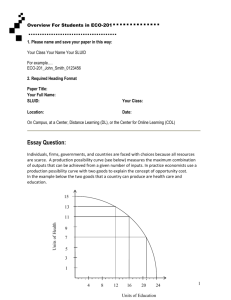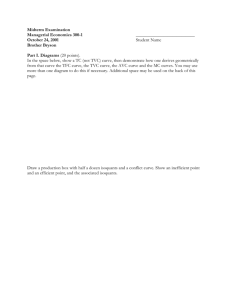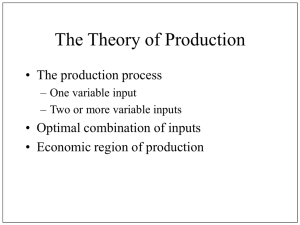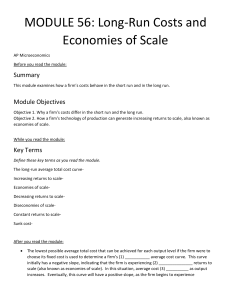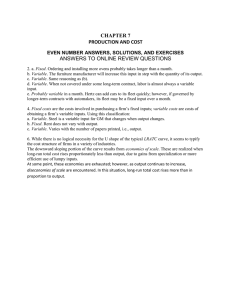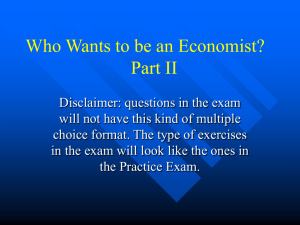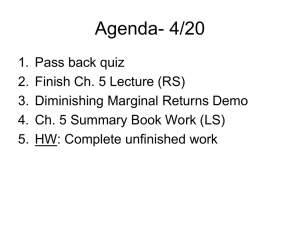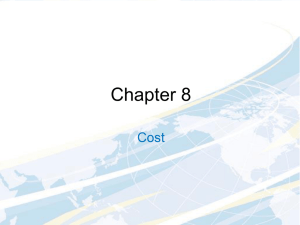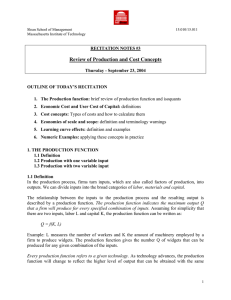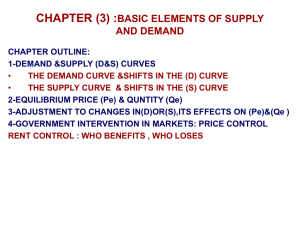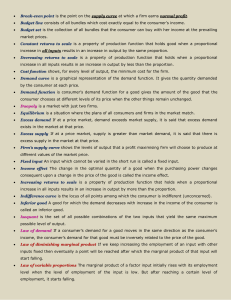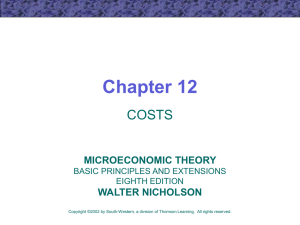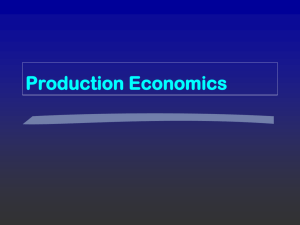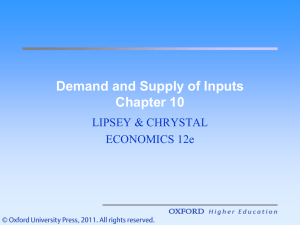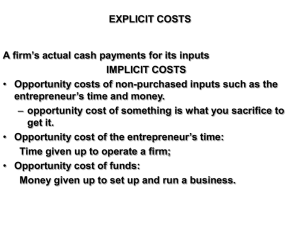Ch. 7 Cont.
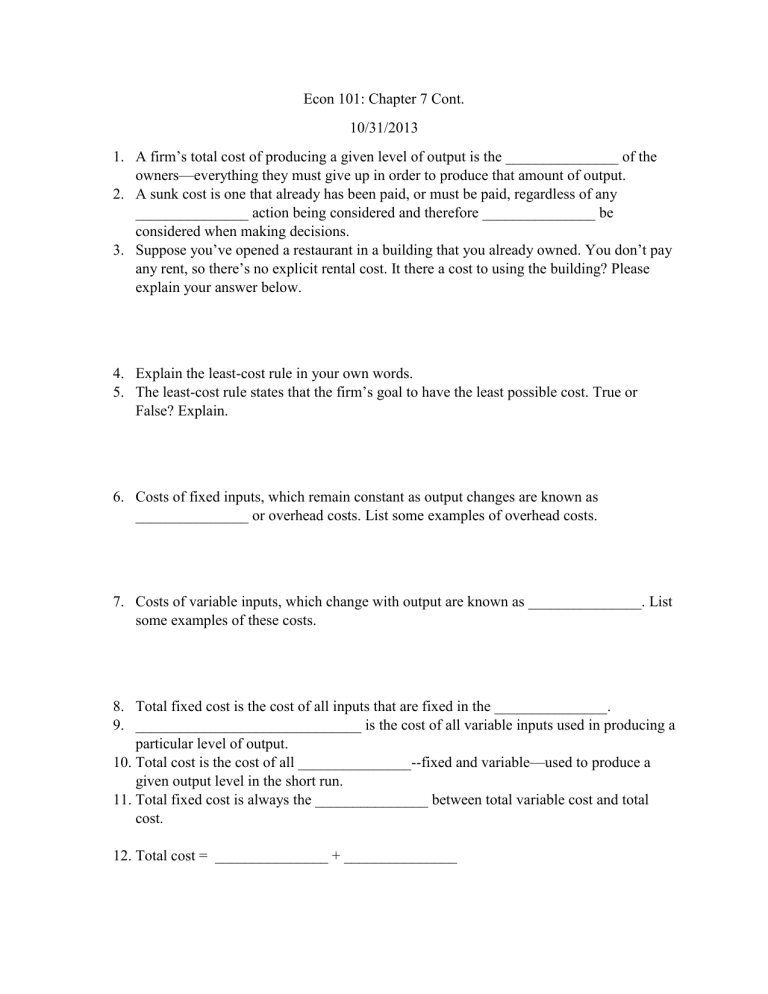
Econ 101: Chapter 7 Cont.
10/31/2013
1.
A firm’s total cost of producing a given level of output is the _______________ of the owners—everything they must give up in order to produce that amount of output.
2.
A sunk cost is one that already has been paid, or must be paid, regardless of any
_______________ action being considered and therefore _______________ be considered when making decisions.
3.
Suppose you’ve opened a restaurant in a building that you already owned. You don’t pay any rent, so there’s no explicit rental cost. It there a cost to using the building? Please explain your answer below.
4.
Explain the least-cost rule in your own words.
5.
The least-cost rule states that the firm’s goal to have the least possible cost. True or
False? Explain.
6.
Costs of fixed inputs, which remain constant as output changes are known as
_______________ or overhead costs. List some examples of overhead costs.
7.
Costs of variable inputs, which change with output are known as _______________. List some examples of these costs.
8.
Total fixed cost is the cost of all inputs that are fixed in the _______________.
9.
______________________________ is the cost of all variable inputs used in producing a particular level of output.
10.
Total cost is the cost of all _______________--fixed and variable—used to produce a given output level in the short run.
11.
Total fixed cost is always the _______________ between total variable cost and total cost.
12.
Total cost = _______________ + _______________
13.
Average fixed cost is the total fixed cost _______________ by the quantity of output produced.
14.
Average fixed costs = ----------------------------------
15.
Average fixed costs will always fall as output rises. Why?
16.
Average variable cost = ----------------------------------------
17.
Average total cost = -------------------------------------------
18.
At each level of output, the vertical distance between the average variable cost curve and the average total cost curve is equal to the ______________________________. Why must the ATC curve and the AVC curve get close and closer together as we move rightward?
19.
The following table shows total output (in tax returns completed per day) of the accounting firm of Hoodwink and Finagle:
Number of Accountants Number of Returns per Day
0
1
2
0
5
12
3
4
5
17
20
22
Assuming the quantity of capital (computers, adding machines, desks, etc.) remains constant at all output levels: a) Calculate the marginal product of each accountant. b) Over what range of employment do you see increasing returns to labor?
Diminishing returns? c) Explain why MPL might behave this way in context of an accounting firm.

